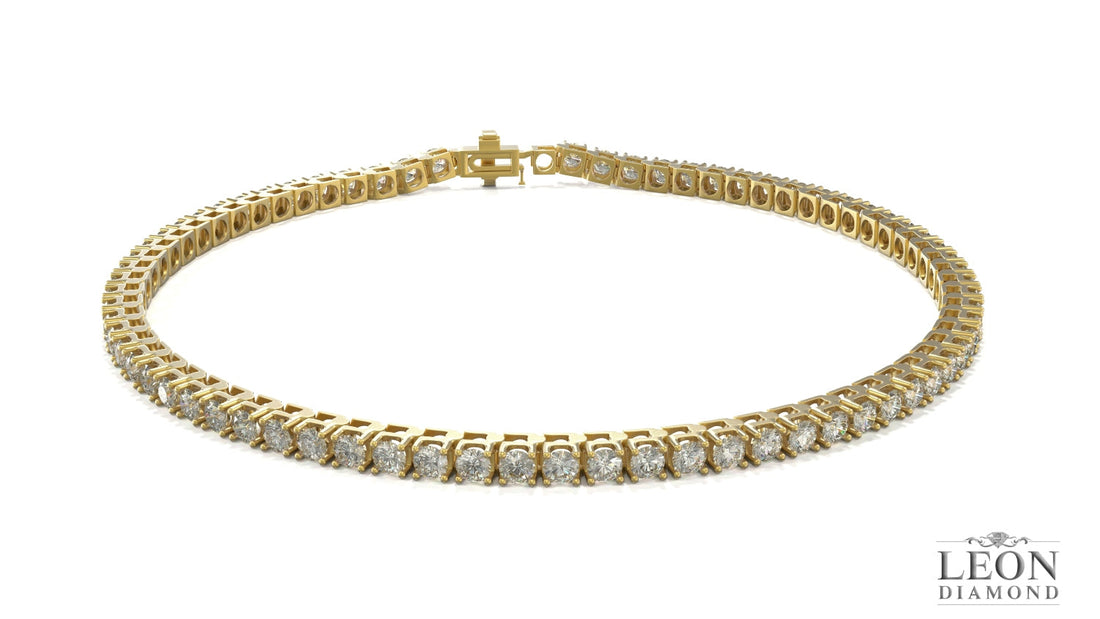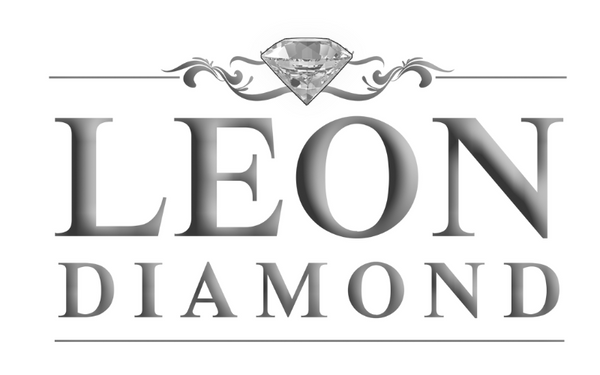
How Tennis Jewelry Became a Status Symbol in Pop Culture
Share
Tennis jewelry, especially the tennis bracelet, has become more than just an accessory. Defined by a sleek line of diamonds or gemstones set in symmetry, it represents elegance, luxury, and timeless style. According to the Gemological Institute of America (GIA), its lasting appeal lies in the balance of craftsmanship, sparkle, and cultural relevance. Once a niche style, tennis jewelry is now celebrated across fashion runways, red carpets, and music videos as a universal marker of prestige.
In this blog, we will explore how tennis jewelry transformed into a pop culture status symbol, from its historical origins to its presence in Hollywood, luxury branding, celebrity influence, and modern fashion trends.
Origins and Cultural Breakthrough
The story of tennis jewelry begins with its defining moment in sports history. Before Chris Evert's match incident, diamond line bracelets existed but were not widely known as "tennis bracelets.” During the 1987 U.S. Open, Evert famously stopped play after her diamond bracelet fell off, calling it her tennis bracelet, a moment that, as the Gemological Institute of America (GIA) notes, forever redefined the piece and linked it to both athleticism and elegance.
This cultural breakthrough was vital because it created a fusion between sports and luxury fashion, a previously uncommon combination. The incident also highlighted how a single event can influence consumer perception and change the course of jewelry marketing forever.
Key highlights:
- The 1987 Chris Evert incident cemented the term "tennis bracelet."
- Jewelry transitioned from private luxury to a widely discussed fashion piece.
- It bridged the gap between sports, elegance, and pop culture visibility.
This historical event became the foundation upon which tennis jewelry grew into a status symbol, preparing the ground for its rise in fashion, music, and Hollywood.
Hollywood and Celebrity Endorsements

Hollywood played a central role in popularizing tennis jewelry beyond the tennis court. Stars wearing tennis bracelets on the red carpet turned the accessory into a statement of success, elegance, and sophistication. When paired with designer gowns and luxury events, the bracelet's minimalist yet dazzling design became synonymous with high social standing.
Celebrities amplified its allure by using it as a visible display of wealth and glamour. The brand's "Green Carpet" initiative showcases how celebrity visibility can merge luxury with ethical values. Major award shows and film premieres became platforms where tennis jewelry was showcased to global audiences, reinforcing its cultural importance.
Key influences:
- Red carpet appearances solidified tennis jewelry as a luxury statement.
- Hollywood's elite linked the bracelet with success, beauty, and status.
- Celebrity endorsements drove global demand and aspiration for ownership.
Showcases iconic pieces owned by Hollywood royalty, highlighting the lasting association between celebrities and jewelry.
Association with Luxury Brands
As tennis jewelry gained recognition, luxury jewelry houses recognized its potential as a signature product. High-end brands began designing tennis bracelets and necklaces with superior craftsmanship, rare diamonds, and innovative clasp systems to appeal to elite buyers. This positioned tennis jewelry firmly within the world of high fashion and exclusivity.
By associating tennis jewelry with luxury branding, companies ensured that it remained out of reach for the masses, reinforcing its role as a symbol of wealth and exclusivity. These brands also incorporated tennis jewelry into their seasonal collections, ensuring it remained relevant and aspirational.
Brand contributions:
- Tiffany & Co., Cartier, and Harry Winston promoted tennis jewelry as luxury staples.
- Limited edition collections increased rarity and exclusivity.
- Celebrity brand collaborations further elevated its aspirational value.
The Federal Trade Commission (FTC) regulates how jewelry, including high-end pieces like tennis bracelets, must be marketed to prevent deceptive claims. Their updated Jewelry Guides help ensure clarity and truthfulness in advertising, which luxury brands must adhere to, reinforcing the integrity and exclusivity associated with their products.
Influence of Music and Hip-Hop Culture
Music, especially hip-hop, transformed the meaning of tennis jewelry by linking it directly with wealth, power, and status. Rappers and musicians adopted diamond tennis chains and bracelets as symbols of success, often referring to them in lyrics and music videos. This made tennis jewelry accessible to younger audiences while also redefining its cultural identity.
Hip-hop culture shifted the focus from elegance alone to bold self-expression. The trend of wearing stacked tennis chains and oversized bracelets became widespread in music circles, further embedding the accessory in popular culture.CBP confiscation data highlights the high demand and perceived value of luxury jewelry, showcasing why tennis jewelry is highly coveted and symbolically significant. CBP seizure of counterfeit luxury jewelry worth over $9.2 million
Cultural drivers in music:
- Hip-hop artists promoted tennis jewelry as symbols of achievement.
- Lyrics and videos showcased tennis bracelets as markers of wealth.
- Younger generations embraced tennis jewelry as part of street fashion.
The music industry's adoption ensured tennis jewelry moved from Hollywood glamour into everyday conversations, making it both luxurious and relatable at the same time.
Modern Fashion and Social Media
In the digital age, social media platforms amplified tennis jewelry's cultural relevance. Influencers and fashion bloggers showcase it as a versatile accessory, suitable for both formal events and casual wear. Platforms like Instagram and TikTok introduced new audiences to the elegance of tennis jewelry, making it a trending item among millennials and Gen Z.
Fashion stylists often highlight how tennis bracelets can be layered with watches or stacked for a modern look. This evolution keeps the jewelry relevant and ensures it adapts to shifting trends while maintaining its timeless charm.
Modern style trends:
- Social media makes tennis jewelry visible to wider, younger audiences.
- Versatile styling includes stacking bracelets and pairing with luxury watches.
- Influencer marketing promotes tennis jewelry as both elegant and trendy.
Through social media, tennis jewelry now represents not only wealth but also style, creativity, and modern individuality.
Why Tennis Jewelry Is a Status Symbol

The enduring appeal of tennis jewelry lies in its ability to symbolize wealth, sophistication, and timeless style. Its cultural journey from the tennis court to red carpets, music videos, and social media proves its versatility and lasting power.
More than just decoration, tennis jewelry communicates personal success and refined taste. Its minimalistic design allows diamonds and gemstones to take center stage, while its association with sports history, luxury brands, and pop icons gives it unmatched symbolic value.
Reasons behind status symbol value:
- Represents wealth, achievement, and exclusivity.
- Links sports history with luxury and pop culture.
- Timeless design ensures continuous relevance across generations.
The tennis bracelet, and tennis jewelry overall, remains a universal marker of prestige, admired for its elegance and symbolic power.
The Enduring Status of Tennis Jewelry
Tennis jewelry's transformation into a cultural status symbol is a story of history, celebrity power, and brand strategy. From Chris Evert's 1987 match to modern influencers on Instagram, the journey highlights how fashion, sports, and entertainment intersect to shape trends. Today, tennis jewelry remains one of the most admired symbols of luxury and cultural prestige.
As fashion continues to evolve, the timeless sparkle of tennis jewelry ensures it will remain an icon of status and elegance in pop culture for generations to come. Discover the elegance and craftsmanship that make tennis jewelry a true status symbol. Explore our exclusive collection at Leon Diamond and find the perfect piece to elevate your look with timeless luxury.
Frequently Asked Questions
What makes tennis jewelry the ultimate luxury status symbol?
Tennis jewelry's continuous line of sparkling diamonds or gems creates an unmistakably luxurious look. Its dazzling brilliance is an instant sign of wealth, exclusivity, and fine taste.
How did tennis jewelry explode into pop culture fame?
The 1987 US Open moment when tennis star Chris Evert lost her bracelet mid-match catapulted the style into the spotlight. This unforgettable incident made the "tennis bracelet" a household name and cultural icon.
Which celebrities turned tennis jewelry into a must-have accessory?
Celebrities like Serena Williams, Beyoncé, and Rihanna have worn tennis jewelry on red carpets and in music videos. Their endorsement transformed it from classic sparkle to a coveted fashion statement worldwide.
Why is tennis jewelry a go-to for showing off success?
Because nothing says "I've arrived" like flashing a flawless row of shimmering diamonds on your wrist. Tennis jewelry is worn to signal achievement, power, and style in high-profile settings.
Is tennis jewelry just for one gender?
Absolutely not, its sleek, timeless design appeals to all genders. Whether on athletes, musicians, or influencers, it's a bold statement of confidence and prestige for anyone who wears it.
